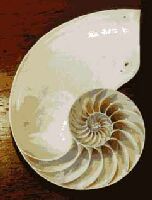


|
Diana's shampoo has a pH of five and a half. How much more acidic is it than pure water? Further down on this page, you'll get a chance to submit your answer. Like the Richter scale for earthquakes, the pH scale is "logarithmic": every step in it means the quantity in question is multiplied by some fixed number -- which is 10 in both these cases, but in opposite directions. |

|
For instance, stepping from 6 to 7 in the Richter scale represents an tenfold increase in quake amplitude; in the pH scale, the same step would mean a tenfold decrease of acidity. The pH level of pure water is 7, that of orange juice is around 3. For chemical reasons, acidity cannot be cranked up indefinitely, so the standard pH scale stops at zero. Since nobody knows what convulsions the earth is capable of, the Richter scale is open at the top. The 1999 quakes in Turkey (cf. photo on the right) tallied about 7.

|
The decibel scale measures loudness: each of its steps, multiplies acoustic amplitude by a factor of about 1.2589. This is the 10th root of 10; in other words, ten such steps will multiply the noise level by ten. (By the way, this double use of 10 gives rise to some befuddlement). At approximately 100 dB, the biker shown on the left gets a hundred million times as much sound as his mum in her quiet living room (20 dB). Musical scales are also logarithmic: every semitone step of the chromatic scale multiplies pitch by roughly 1.0595 (the 12th root of 2). Whereas the human ear can handle a very large range of noise, it can only perceive ten octaves of pitch. Oddly enough, in both cases this works out to about 120 (decibels and semitones, respectively). | 
|
What does the nautilus shell, depicted on the right, have to do with all this? Well, each of its chambers is bigger than the last one by the (theoretically) same factor. So, as you go around, the radius expands exponentially -- wherefore the outline is called a logarithmic spiral. If you find this contradictory, remember that exponential and logarithm are just opposite ways of looking through the same telescope.
The Pacific Institute for the Mathematical Sciences (PIMS) is a non-profit organisation supported by five universities of Western Canada and dedicated to the promotion of mathematical research -- but it also has a programme of education and public awareness.
This contest is now over. The correct answer was 31.62 (the square root of 1000) or any round-off or alias. The winner of the draw was Wayne Anthony Chevrier.